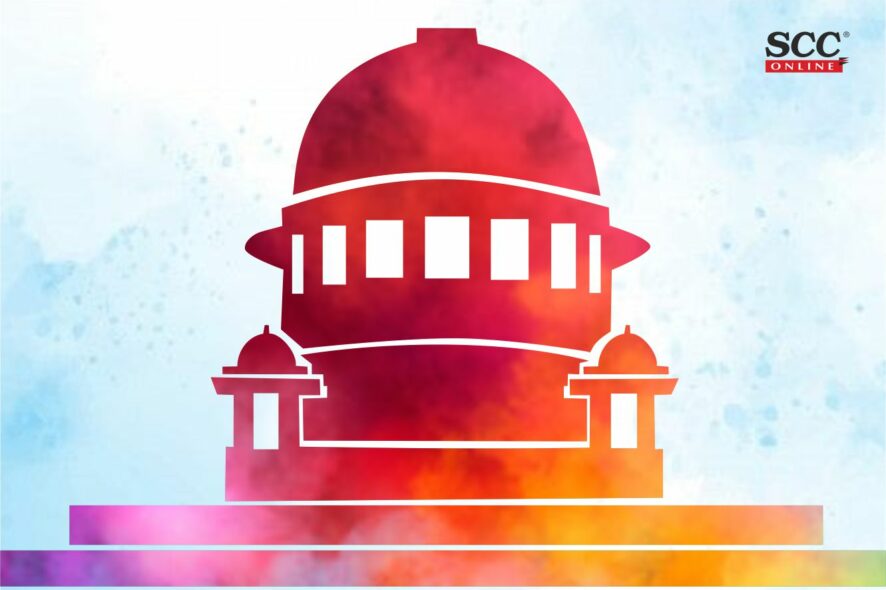Supreme Court: The 3-judge bench of Dr. DY Chandrachud*, Indu Malhotra and Indira Banerjee, JJ has held that collusive transactions with the Corporate Debtor would not constitute a ‘financial debt’ under Insolvency and Bankruptcy Code.
Financial Creditor and Financial Debt
Under Section 5(7) of the IBC, a person can be categorised as a financial creditor if a financial debt is owed to it. Section 5(8) of the IBC stipulates that the essential ingredient of a financial debt is disbursal against consideration for the time value of money.
As per the decision in Pioneer Urban Land and Infrastructure Ltd v. Union of India, (2019) 8 SCC 416,
“The expression “disbursed” refers to money which has been paid against consideration for the “time value of money”. In short, the “disbursal” must be money and must be against consideration for the “time value of money”, meaning thereby, the fact that such money is now no longer with the lender, but is with the borrower, who then utilises the money….”
Collusive Transactions
Money advanced as debt should be in the receipt of the borrower. The borrower is obligated to return the money or its equivalent along with the consideration for a time value of money, which is the compensation or price payable for the period of time for which the money is lent. A transaction which is sham or collusive would only create an illusion that money has been disbursed to a borrower with the object of receiving consideration in the form of time value of money, when in fact the parties have entered into the transaction with a different or an ulterior motive. In other words, the real agreement between the parties is something other than advancing a financial debt.
The IBC has made provisions for identifying, annulling or disregarding “avoidable transactions” which distressed companies may have undertaken to hamper recovery of creditors in the event of the initiation of CIRP. Such avoidable transactions include:
(i) preferential transactions under Section 43 of the IBC;
(ii) undervalued transactions under Section 45(2) of the IBC;
(iii) transactions defrauding creditors under Section 49 of the IBC; and
(iv) extortionate transactions under Section 50 of the IBC.
The IBC recognizes that for the success of an insolvency regime, the real nature of the transactions has to be unearthed in order to prevent any person from taking undue benefit of its provisions to the detriment of the rights of legitimate creditors.
Hence, collusive transactions with the Corporate Debtor would not constitute a ‘financial debt’.
Related Parties – Interpretation In Praesenti
Where a financial creditor seeks a position on the CoC on the basis of a debt which was created when it was a related party of the corporate debtor, the exclusion which is created by the first proviso to Section 21(2) must apply. For, it is on the strength of the financial debt as defined in Section 5(8) that an entity claiming as a financial creditor under Section 5(7) seeks a position on the CoC under Section 21(2). If the definition of the expression ‘related party’ under section 5(24) applies at the time when the debt was created, the exclusion in the first proviso to Section 21(2) would stand attracted.
“However, if such an interpretation is given to the first proviso of Section 21(2), all financial creditors would stand excluded if they were a ‘related party’ of the corporate debtor at the time when the financial debt was created. This may arguably lead to absurd conclusions for entities which have legitimately taken over the debt of related parties, or where the related party entity had stopped being a ‘related party’ long ago.”
The exclusion under the first proviso to Section 21(2) is related not to the debt itself but to the relationship existing between a related party financial creditor and the corporate debtor. As such, the financial creditor who in praesenti is not a related party, would not be debarred from being a member of the CoC. However, in case where the related party financial creditor divests itself of its shareholding or ceases to become a related party in a business capacity with the sole intention of participating the CoC and sabotage the CIRP, by diluting the vote share of other creditors or otherwise, it would be in keeping with the object and purpose of the first proviso to Section 21(2), to consider the former related party creditor, as one debarred under the first proviso.
Hence,
“while the default rule under the first proviso to Section 21(2) is that only those financial creditors that are related parties in praesenti would be debarred from the CoC, those related party financial creditors that cease to be related parties in order to circumvent the exclusion under the first proviso to Section 21(2), should also be considered as being covered by the exclusion thereunder.”
If this interpretation is not given to the first proviso of Section 21(2), then a related party financial creditor can devise a mechanism to remove its label of a ‘related party’ before the Corporate Debtor undergoes CIRP, so as to be able to enter the CoC and influence its decision making at the cost of other financial creditors.
[Phoenix Arc Pvt. Ltd. v. Spade Financial Services Ltd., 2021 SCC OnLine SC 51, decided on 01.02.2021]
*Justice Dr. DY Chandrachud has penned this judgment
Appearances before the Court by
Senior Advocate K.V. Viswanathan for AAA and Spade;
Senior Advocate Neeraj Kishan Kaul for Phoenix; and
Senior Advocate Sanjiv Sen for the Resolution Professional






